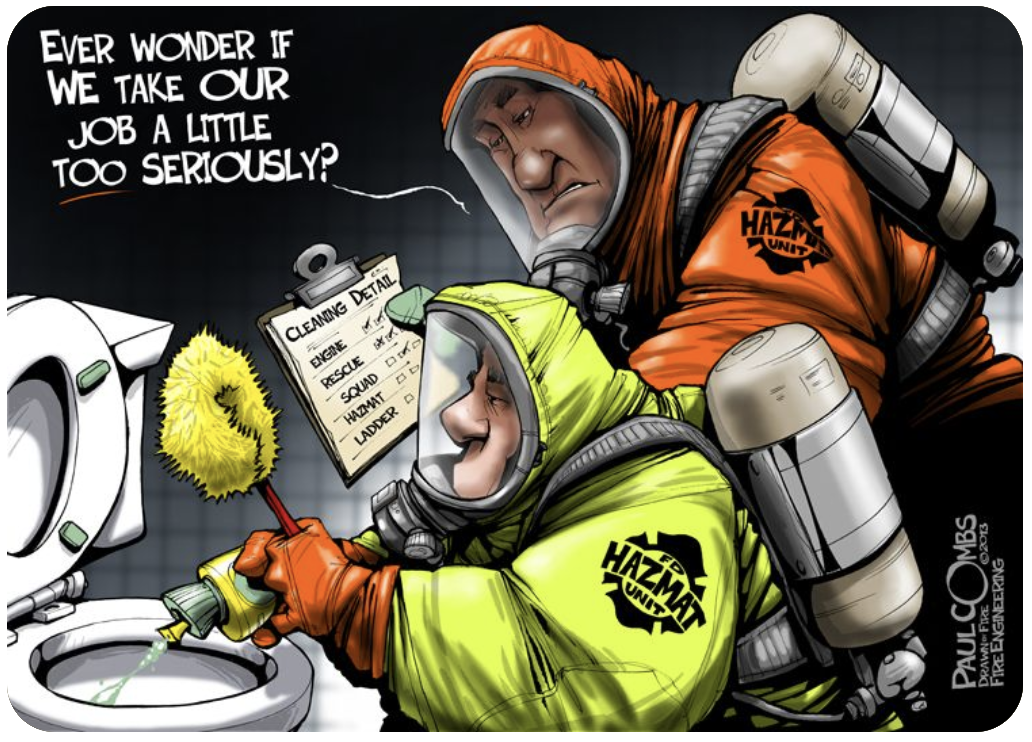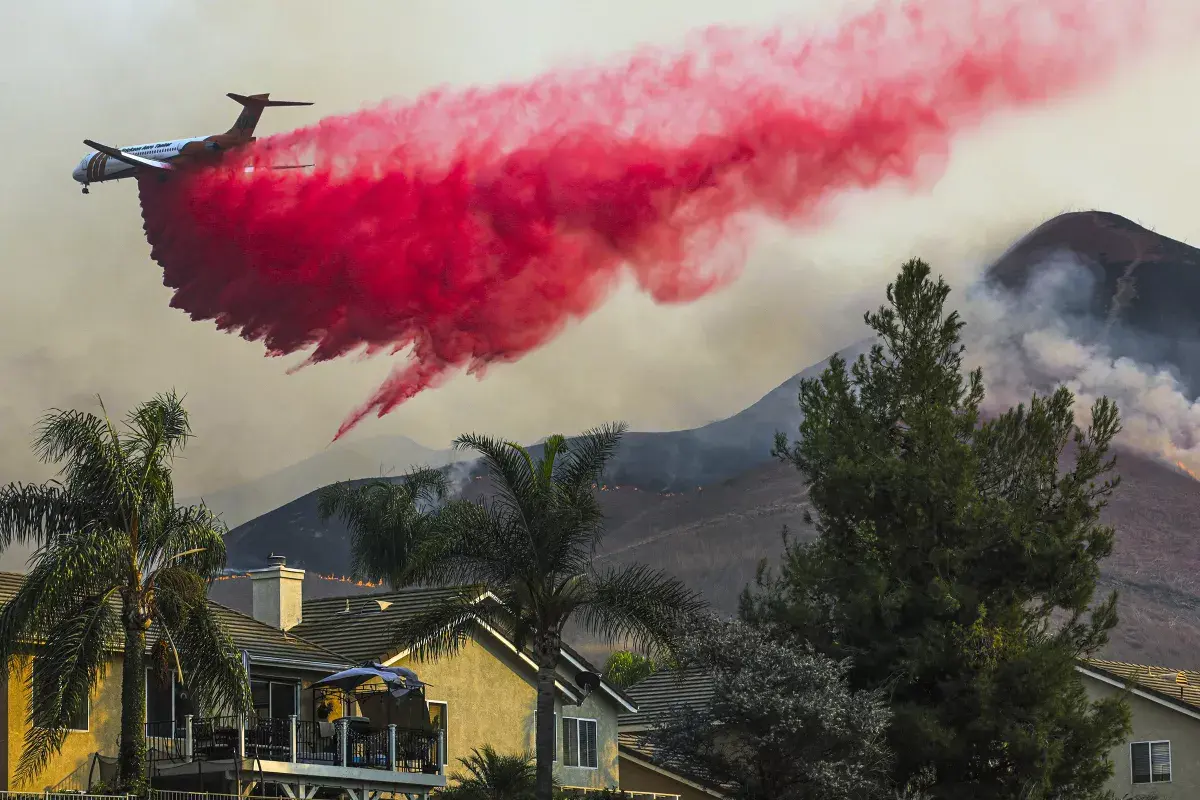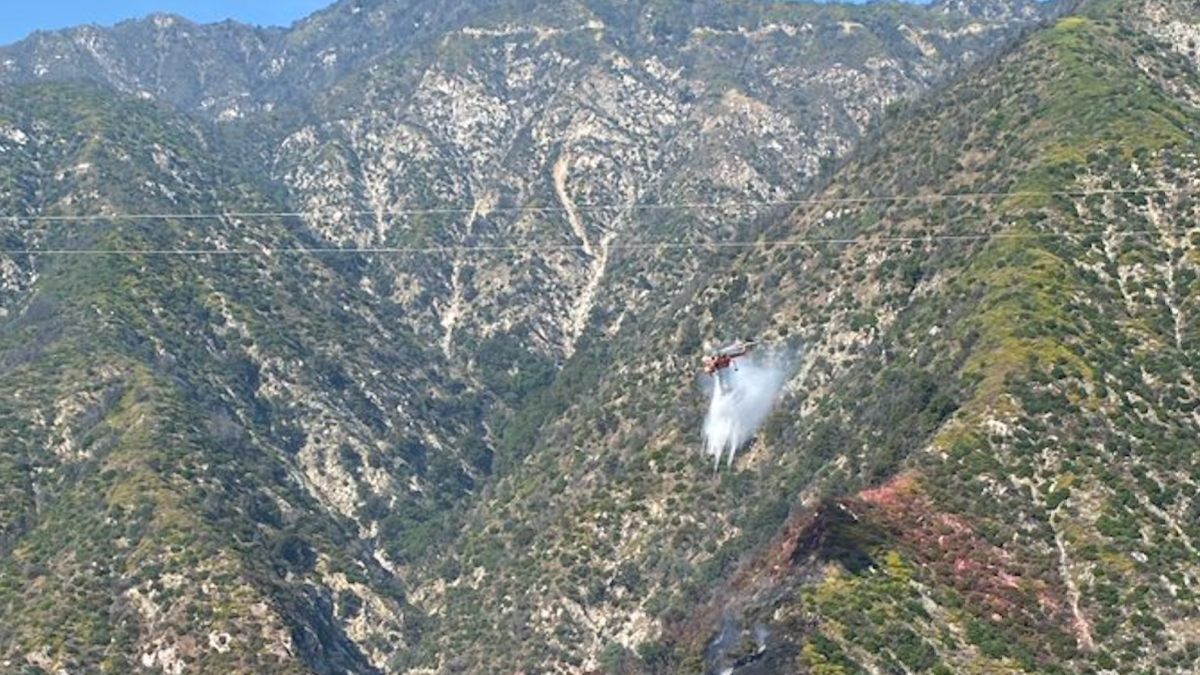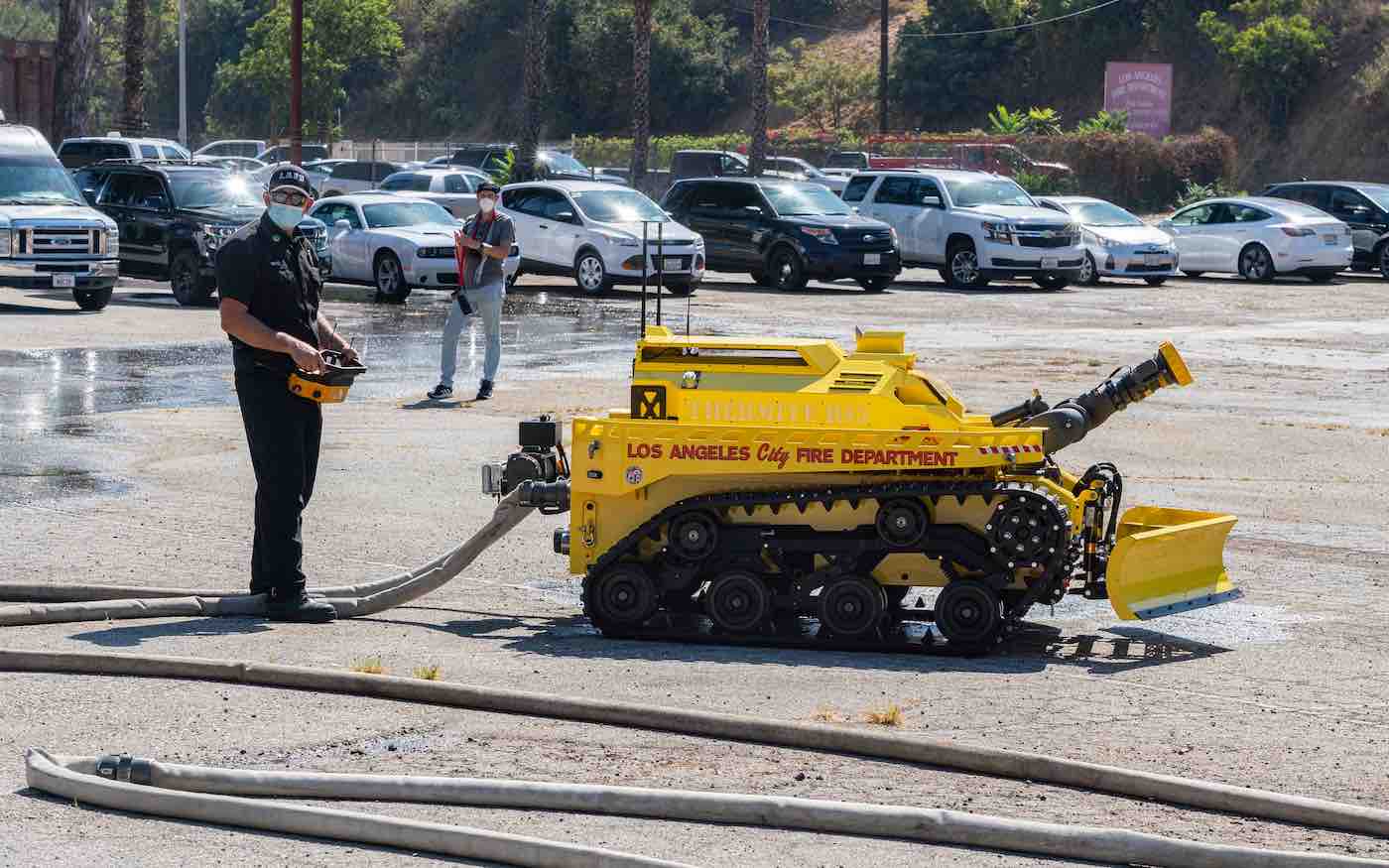As the first heat wave of summer plunges California into yet another wildfire season, some environmental groups are taking aim at a commercial fire retardant that most residents have grown all too familiar with during recent, devastating fire years.
Phos-Chek, that neon-pink goo that airplanes dump over wildfires, is a sticky slurry of ammonium phosphate designed to coat vegetation and other fuels to deprive advancing flames of oxygen. Fire authorities swear by the product, calling it indispensable.
But critics argue that officials are overlooking the product’s ecological risks. Studies have shown the retardant can harm plants, fish and other species, including steelhead trout and Chinook salmon. It can also act as a fertilizer that grows more vegetation, which can later act as fuel for fires.
“Fire retardant has more adverse effects on endangered species than any other thing the federal government does, and there’s not even a close second,” said Andy Stahl, executive director of Forest Service Employees for Environmental Ethics, an advocacy group that recently sued the U.S. Forest Service over its use of aerial retardant.
The pool area of a residence is covered with red fire retardant.
The pool area of a residence is covered in fire retardant in the Fairview fire burn area near Hemet in 2022.
(Luis Sinco/Los Angeles Times)
Experts say the idea of preventative spray is compelling, particularly given the severity of the West’s worsening wildfire crisis, but worry that there’s “no such thing as a free lunch.”
“This is one proposed solution to that problem — at least a partial solution — which is to render the vegetation less flammable, and that’s pretty cool,” said Hugh Safford, a researcher at UC Davis and former ecologist with the Forest Service.
“But given that we know that ammonium phosphate has effects, particularly in aquatic systems, and given that we don’t know much, if anything, about turning this into a roadside application that then lasts on the vegetation for a year, I would assume that anyone who has issues with aerial application is going to have the same issues with roadside spray.”
Perimeter Solutions, the Clayton, Mo.-based manufacturer, said its newest product, Phos-Chek Fortify, offers long-term protection against against wildfires. In promotional videos, crews are seen spraying the material along roadsides and on the grounds of the Santa Barbrara County ranch and “Western White House” of former President Ronald Reagan.
Jeff Emery, the company’s president of global fire safety, said in an email that ground-applied roadside applications have “proven to measurably reduce the frequency of new ignitions, preventing fires in high-risk areas while also protecting potential evacuation routes away from impacted communities.
“The use of ground applications for retardant allows more precise delivery to ensure avoidance of waterways when applying this life-saving tool along roadways,” Emery said. “Perimeter Solutions is proud of the role we are serving to protect vulnerable communities from risk and to act as stewards to the environment to minimize the impact of fire on our forests, wildlife, and communities.”
Joshua Trees, cactuses and grasses are stained red.
Joshua Trees, cactuses and grasses were stained red from fire retardant drops during the 2020 Bobcat fire in Juniper Hills.
(Allen J. Schaben/Los Angeles Times)
Critics aren’t convinced.
When it comes to preventative spraying along roadsides, Timothy Ingalsbee, a former wildland firefighter and executive director of the nonprofit Firefighters United for Safety, Ethics and Ecology, argued that resources would be better spent hardening homes and communities and conducting controlled burns, which are “more effective and actually less damaging than chemical warfare.”
Ingalsbee has long been critical of how fire authorities use air-dropped retardant in wilderness areas, saying the material is overused and frequently dropped in areas where its effectiveness is limited. The new product, he said, will only help the manufacturer earn even more profits. He calls the use of both materials “a government boondoggle.”
“It is true that a lot of ignitions do start along roads, but how many roads do we have?” he said.
Stahl, of the FSEE, said the product’s fertilizer qualities also made it a particularly bad choice for such applications.
“Although you may retard an ignition or a fire spread for this season, what you’ve done is grown a lot more biomass to burn in the next year,” he said.
A white horse sticks out its tongue in a yard that bears a pinkish hue.
A horse stands in a yard that is colored pink from retardants drops in Hemet during the Fairview fire in 2022.
(Irfan Khan/Los Angeles Times)
The debate over the environmental effects of retardant reached a fever pitch recently when a Montana judge ruled partly in favor the FSEE on its charges that the Forest Service was violating the Clean Water Act with its use of aerial retardant. The Clean Water Act prohibits the discharge of pollutants into U.S. waters without a permit.
U.S. District Judge Dana Christensen agreed that dumping the chemical retardant from planes is a violation of the nation’s clean water law.
However, Chistensen stopped short of preventing the Forest Service from using the material, noting that doing so “could conceivably result in greater harm from wildfires — including to human life and property and to the environment — by preventing the USFS from effectively utilizing one of its fire fighting tools.”
The judge instead ordered the Forest Service to obtain a permit from the U.S. Environmental Protection Agency to cover its discharge of retardant into waterways, a process that could take up to three years. The Forest Service must provide the court with status reports on its progress toward that permit every six months, but can continue to use the retardant in the meantime.
Many who fight fires said banning the use of retardant would be catastrophic for California and the West, where wildfires are burning larger, hotter and faster than ever before.
The judge’s call was “absolutely the right decision,” said Ken Pimlott, former director of the California Department of Forestry and Fire Protection. “If the ability of the Forest Service to utilize that product had been hampered, it would have had cascading impacts.”
While water cools fires, Pimlott said, it often evaporates so quickly that it doesn’t provide ground crews with enough time to build containment lines to stop the blaze. Retardant, on the other hand, coats the vegetation and slows the spread of fire, allowing crews more time to move in.
“Retardant plays a key role,” he said. “It’s just one of the tools in the toolbox for fighting fires, but it’s an integral piece.”
Indeed, crews in California are increasingly turning to the material. Over the last three years, Cal Fire dropped 45 million gallons of aerial retardant, compared with 32 million gallons of water, according to agency data.
Safford, of UC Davis, said longer-term studies are needed to fully understand the ecological effects of the roadside spray. Though Phos-Chek’s negative effects on aquatic environments are well established, less is known about its effect on microbiology, insects, soils and plants, including the ability of leaves to photosynthesize or transpire water while covered in the material, he said.
Still, the ability to apply the product with some precision is a benefit. “Many, many ignitions start in dry vegetation next to roads,” he said. “Spraying on and around powerlines and telephone poles is a great idea, because telephone poles and powerlines and telephone systems go down when fire burns through them.”
When asked whether the products encouraged grasses and other vegetation to grow, Emery said the amount of phosphate included in Phos-Chek is “not as high as what you would find in a direct fertilizer application,” and is further diluted after it rains.
He noted that all Phos-Chek retardants are included on the U.S. Forest Service Qualified Product List, meaning “the product has gone through stringent testing protocols administered by the Forest Service and that it meets all performance, mammalian and fish toxicity and environment safety requirements.”
Meanwhile, dozens of California government organizations, as well as private and commercial landowners have begun using Phos-Chek Fortify.
The California Department of Transportation is currently conducting a study of the roadside spray as a “potential tool for future use,” the agency said.
Large pink stones rise in the foreground while a slightly stained home can be seen in the background.
A house and yard near Hemet are covered in pink fire retardant in the Fairview fire burn zone in 2022.
(Luis Sinco/Los Angeles Times)
In 2019, Phos-Chek Fortify was sprayed along a four-mile stretch of Route 118 through Rocky Peak in the Santa Susana Mountains, near the border of Los Angeles and Ventura counties, where 37 wildfires were recorded the year prior, Emery said. No fires were recorded there in 2019.
In 2021, it was applied along Lake Nacimiento Road in San Luis Obispo County, where “no fires were recorded in the treated area the rest of the summer,” he said.
And last year, the retardant was applied along the roadside in Wildcat Canyon in San Diego County, where a wildfire did ignite. “What was projected to be a half-acre to one-acre fire was reduced in size 99% due to the proactive application of Phos-Chek,” he said.
That application came soon after the San Diego County Board of Supervisors awarded a contract to Perimeter Solutions to apply Phos-Chek Fortify along 260 miles of roads in key evacuation corridors.
San Diego resident Sandra Martinez expressed concern about the decision during the board meeting.
“Water does make things run downhill,” she said. “The toxicity will affect things that are not in the area where it is deposited, and possibly end up in our oceans, affecting our ocean life, so it will affect everything in its pathway.”
Chuck Westerheide, a spokesman for the county, said San Diego is continuing the program this year and has already applied Phos-Chek Fortify to 20 miles of roads, with plans for 20 more. The material is not applied within 100 feet of any waterways, he said.
“The mix may not stop a fire from starting, but it will slow the growth of the fire, allowing Cal Fire crews more time to arrive and contain it,” he said.
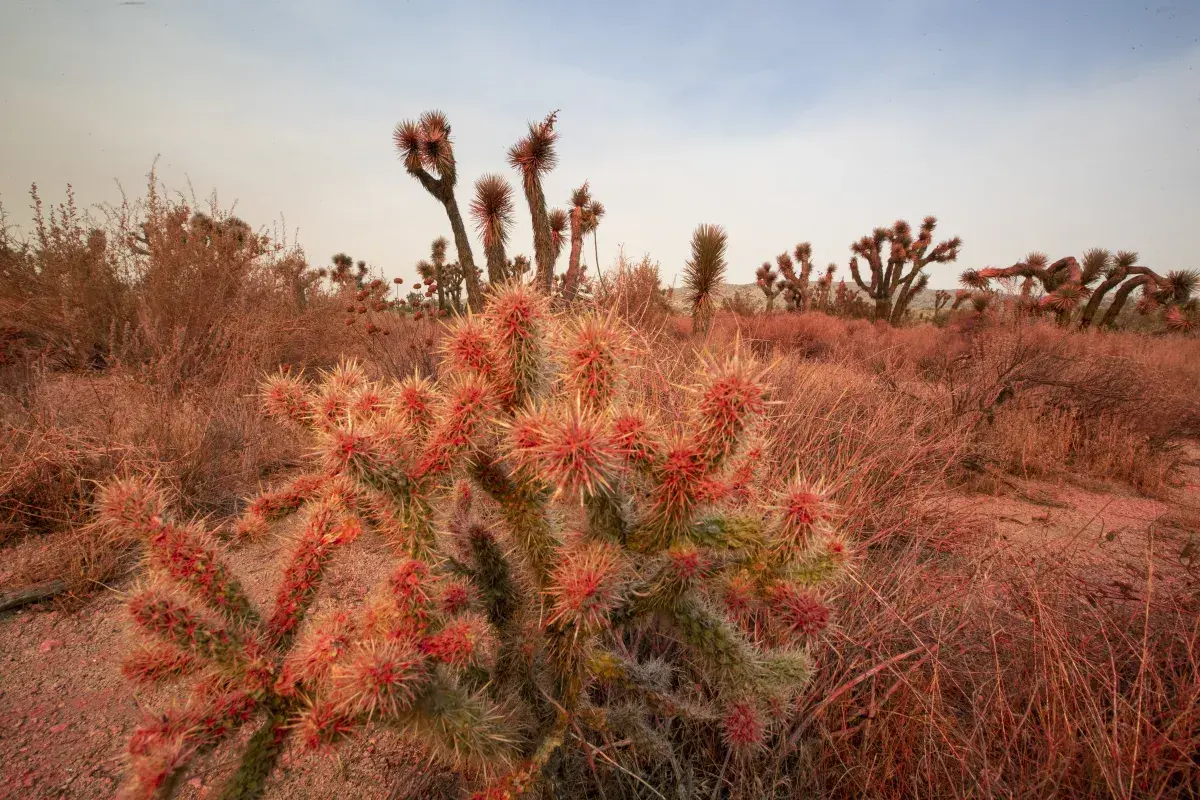
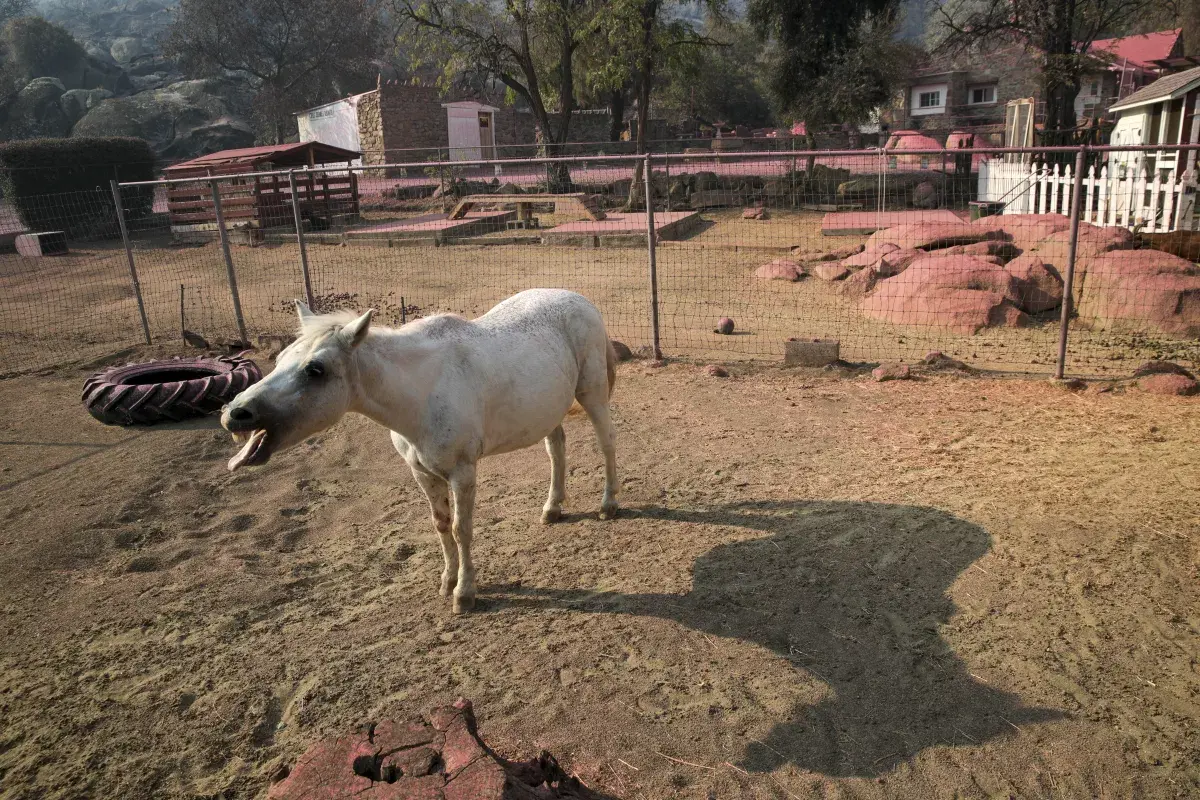
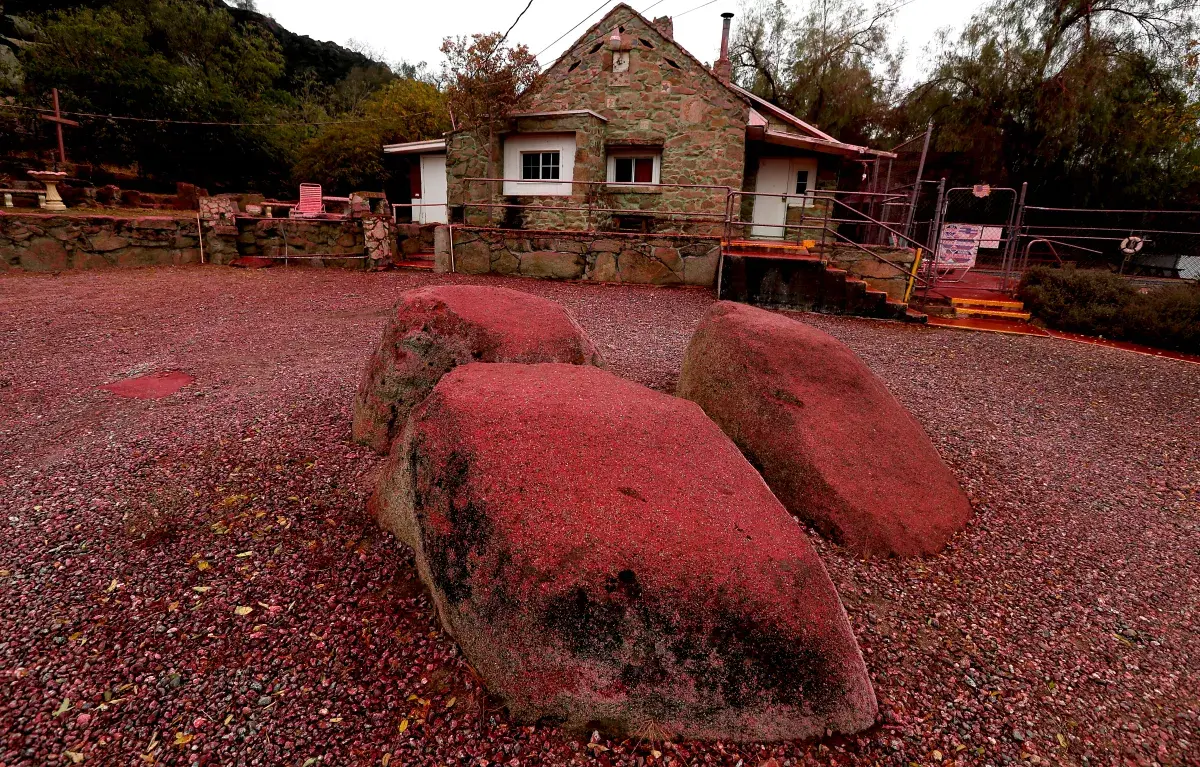
Source
[[[[[[Links](https://dot.ca.gov/-/media/dot-media/programs/research-innovation-system-information/documents/preliminary-investigations/pi-0284-a11y.pdf)](https://www.fs.usda.gov/rm/fire/wfcs/products/)](https://www.latimes.com/california/story/2021-07-13/california-fires-are-burning-hotter-faster-than-even-putting-them-out-if-getting-harder)](https://www.latimes.com/california/story/2023-03-29/u-s-forest-service-defends-use-of-pink-wildfire-retardant)](https://pubmed.ncbi.nlm.nih.gov/24880550/)](https://www.waterboards.ca.gov/water_issues/programs/nps/docs/wqmp_forests/comments/stahl_fsee_comments_capelli.pdf):
[YouTube]
YouTube2
